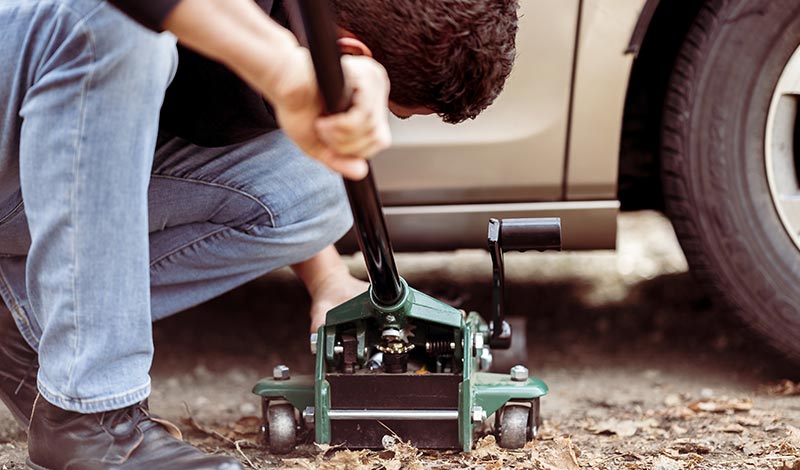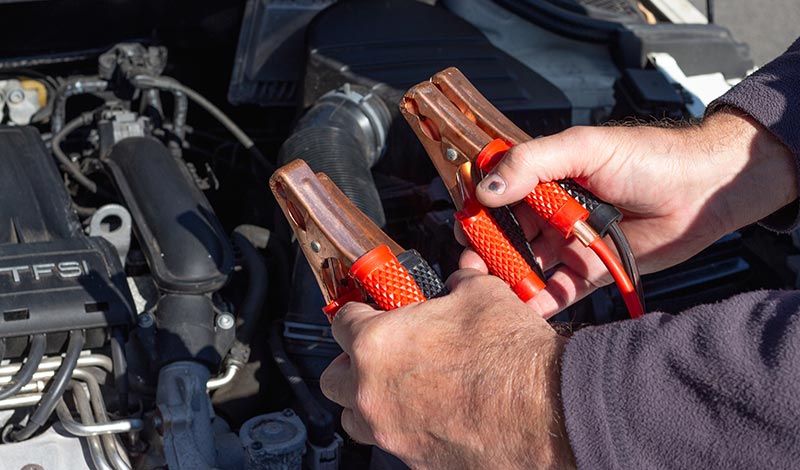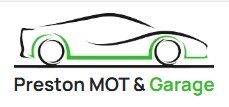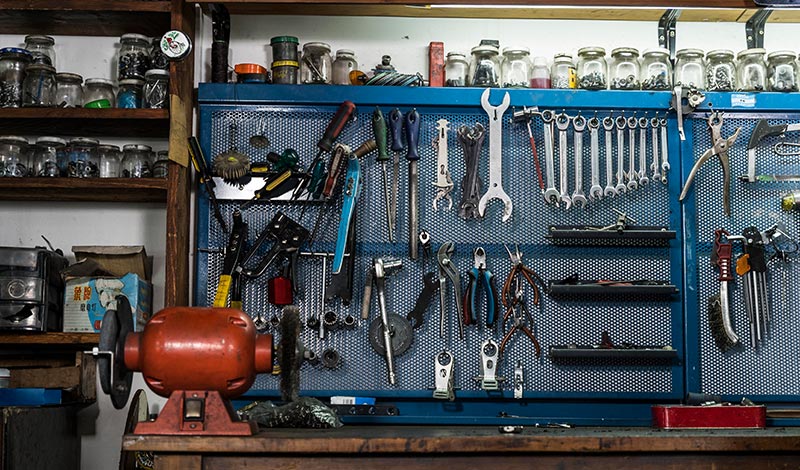If you’re a car owner with a penchant for doing things yourself, equipping your garage with essential tools can make all the difference. Whether you aim to perform regular maintenance tasks or tackle unexpected problems, the right tools empower you to act efficiently and safely. This article delves into must-have garage tools and elaborates on the specific problems each can resolve.
Basic Hand Tools
Screwdriver Set

Problem it Solves:
The screwdriver set is invaluable for loosening or securing diverse screws found within your vehicle. Whether flathead or Phillips, these tools empower you to work with an extensive range of screws to disassemble or fix components.
When you find yourself facing a task that involves anything from taking off your car’s door panels to removing the air filter, you’ll likely need a screwdriver. Inside the engine compartment, various fasteners often require a flathead or Phillips screwdriver for removal or securement. Similarly, interior components like dashboard panels, audio systems, and glove compartments usually feature screws that require the proper tool for successful disassembly or reassembly.
In addition, modern vehicles incorporate electronic modules and sensors. A screwdriver set will enable you to access and troubleshoot these electrical components effectively. Furthermore, should you need to disconnect your car’s battery for any reason, the correct screwdriver will ensure you can remove the terminal connections safely and without damaging the hardware.
Opt for a screwdriver set that includes multiple sizes and types to ensure you have the right tool for every job. An ergonomically designed handle provides extra grip and reduces hand fatigue during prolonged use. By investing in a high-quality screwdriver set, you significantly broaden your capability to handle a myriad of auto maintenance and repair tasks efficiently.
Wrench Set

Problems Solved:
Bolts and nuts: from adjustment to complete replacement.
When it comes to automotive repairs, the ubiquitous wrench set is more than just another tool; it’s an absolute necessity. Comprising both open-ended and box-end wrenches, a comprehensive set equips you to manage various bolt and nut sizes with optimal flexibility. A key task that a wrench set simplifies is the adjustment of battery terminal bolts. Properly tightening these bolts ensures secure connections, reducing the risk of electrical failures.
However, the utility of a wrench set extends far beyond battery maintenance. For instance, consider the lug nuts on your car’s tires. When you need to replace a flat tire, a wrench grants you the mechanical advantage required to loosen and eventually remove the lug nuts. Moreover, in situations requiring the disconnection or replacement of vehicle parts—be it the exhaust system, suspension, or engine components—a wrench set becomes indispensable.
The tool’s value is accentuated further when undertaking fluid changes. Whether you’re draining engine oil or replacing transmission fluid, securely tightening the drain plug is crucial. A wrench set offers the accuracy and force needed for such applications.
Crucially, a wrench set helps you comply with manufacturer-specified torque settings. This is invaluable in ensuring not just the performance but also the longevity of your vehicle’s key components. Therefore, investing in a high-quality wrench set can genuinely elevate your DIY auto repair capabilities.
Pliers

Problem-Solving Capabilities:
Manipulating, gripping, bending, and severing wires and metal parts with precision.
In a DIY automotive workspace, pliers prove themselves indispensable for a variety of tasks. They come in multiple forms, each uniquely suited for specific jobs. Needle-nose pliers, for example, excel in electrical work, enabling you to navigate tight spaces and grip small connectors. They make jobs like splicing wires or installing electrical components considerably easier.
Groove-joint pliers, on the other hand, offer adjustable jaws, rendering them ideal for tasks that require a strong grip, such as loosening an oil filter or manipulating larger nuts and bolts. Additionally, they allow you to navigate the often limited space of engine compartments more effectively.
Hose clamp pliers specifically cater to hose removal and installation, making it much simpler to replace coolant, fuel, or vacuum lines. If you’ve ever tried to remove a stubborn hose clamp with a standard set of pliers, you’ll immediately recognize the benefit of this specialized tool.
Locking pliers, often known by the brand name Vise-Grip, deliver a secure, adjustable hold. You can lock them in place when loosening rusted bolts or when you need a makeshift clamp. Their holding power makes them particularly useful for jobs that require sustained tension or grip.
In essence, stocking your garage with various types of pliers empowers you to address a broad range of issues. From electrical repairs to mechanical adjustments, the right pair of pliers simplifies the task at hand, ensuring efficiency and precision.
Cordless Drill

Problem it Solves:
Speeding up tasks that involve drilling holes and inserting or extracting screws.
If you’re an auto DIY enthusiast, a cordless drill is not just a luxury—it’s a necessity. Its primary utility lies in the quick and effortless drilling of holes, whether you’re working on the car’s exterior body, adding accessories, or undertaking any interior modifications. You can also switch to a screwdriver bit to speed up the process of fastening or removing screws in various parts of your vehicle.
But beyond these basic functions, a cordless drill’s capabilities expand significantly with the right attachments. For example, a wire brush attachment can assist in removing rust, paint, or grime from metal surfaces. Likewise, you can employ a buffing pad to bring back the lustre to your headlights or even your vehicle’s body. It also comes to your rescue when you’re dealing with stripped screws that a regular screwdriver can’t handle.
More so, modern cordless drills offer adjustable torque settings, which prove invaluable when you’re working with different materials that require varying degrees of force. With this tool, you minimize the risk of over-tightening or under-tightening screws, providing not just speed but also precision and safety.
In summary, a cordless drill empowers you to tackle an array of auto maintenance tasks efficiently and effectively. With its versatile attachments and adjustable settings, it is a multitasking powerhouse for any DIY auto enthusiast.
Impact Wrench

Problems Addressed:
Swiftly loosening or tightening lug nuts and other high-torque fasteners.
When it comes to changing tires or dealing with fasteners that require substantial torque, an impact wrench is your go-to tool. Unlike manual wrenches, an impact wrench harnesses compressed air or electricity to generate significant rotational force, allowing you to remove or install lug nuts with ease. It is a high-performance tool commonly used for tasks requiring torque levels that manual wrenches can’t reliably accomplish.
Imagine you find yourself needing to replace a flat tire. Using a manual wrench can be cumbersome, especially when lug nuts are tightly secured. In contrast, an impact wrench will quickly and efficiently loosen these nuts, significantly reducing both time and effort.
Additionally, an impact wrench ensures consistent force, minimizing the risk of under-tightening or over-tightening—a problem often encountered when relying solely on hand strength. Such inaccuracies can lead to dangerous situations, such as a loosened lug nut leading to a wobbly wheel while driving.
Moreover, impact wrenches offer adaptability. With variable speed settings and a range of attachments, they can also be used for other high-torque applications like suspensions and heavy-duty machinery. Owning this versatile tool adds a layer of convenience and efficiency, making it a staple in any well-equipped garage.
By enabling swift and precise torque application, an impact wrench elevates your DIY capabilities, making it easier to tackle challenges that would otherwise require professional intervention.
Specialty Tools
OBD-II Scanner

Problem it Solves:
Precise identification of engine errors and other vehicular issues signalled by warning lights.
When a mysterious warning light activates on your dashboard, rather than resorting to guesswork or running to a mechanic, an OBD-II scanner empowers you with exact diagnostic information. This tool plugs into your car’s Onboard Diagnostic System (OBD-II port), usually located under the dashboard near the driver’s seat. After a brief scanning process, it displays error codes which you can reference against a manual or database, thereby identifying the specific issue at hand.
Understanding the problem enables you to take targeted action. For instance, if the scanner identifies an oxygen sensor failure, you can replace it yourself without spending on other unnecessary repairs. This level of problem identification is particularly beneficial for those interested in DIY automotive maintenance, as it narrows down the list of possible issues and helps you focus on immediate needs.
Additionally, modern OBD-II scanners often offer real-time monitoring capabilities. This feature allows you to monitor various parameters such as fuel efficiency, temperature, and speed, further contributing to informed decision-making regarding your vehicle’s health. The scanner thus serves as a versatile diagnostic tool that elevates your self-sufficiency in car maintenance.
In summary, an OBD-II scanner is more than just a problem identifier; it’s a comprehensive guide to your car’s health, invaluable for any DIY enthusiast keen on targeted, effective repairs.
Hydraulic Jack

Problem it Solves:
Securely elevating your vehicle for tasks like tire replacement, brake pad changes, or undercarriage inspections.
For any car owner invested in DIY auto maintenance, a hydraulic jack serves as a cornerstone tool. Unlike a standard scissor jack often found in car trunks, a hydraulic jack offers heightened stability and load capacity, ensuring your vehicle remains immovable during tasks that necessitate lifting. The safety gains alone make it a critical addition to your garage toolset.
Hydraulic jacks function through a piston mechanism, achieving high lifting capacities with minimal effort. One pump of the jack handle often translates to a significant lift, expediting the process of elevating your vehicle to the needed height. This efficiency proves particularly invaluable when time is of the essence, for instance, during an emergency roadside tire change.
When using a hydraulic jack, it’s essential to pair it with jack stands. Once elevated, your car should rest on these stands, providing an extra layer of security and freeing up the hydraulic jack for other tasks, if needed. It’s this synergistic use that magnifies the utility of a hydraulic jack.
By integrating a hydraulic jack into your garage, you arm yourself to manage a wide range of repair and maintenance operations with greater confidence and safety. Acquiring one is an investment in both your vehicle’s longevity and your peace of mind.
Torque Wrench

Specific Problem Solved:
Ensuring precise torque application on nuts and bolts according to manufacturer recommendations.
In the realm of car maintenance, the torque wrench emerges as an essential tool, particularly when your task demands a high level of precision in tightening or loosening bolts and nuts. Unlike a regular wrench, a torque wrench lets you set a specific torque level, ensuring that each bolt gets tightened to its optimum tension. This is crucial for several reasons.
Firstly, under-tightening may result in bolts loosening over time, leading to potential part failure. Conversely, over-tightening can strip the threads or even crack parts, both of which can be catastrophic. For sensitive components such as cylinder head bolts, lug nuts, and suspension parts, the manufacturer’s torque specifications are not mere guidelines but strict rules to follow for the longevity and performance of your vehicle.
For example, when installing new wheels, adhering to the specific torque rating is crucial for optimal contact between the wheel and the hub. An improper torque setting can result in uneven tire wear, compromised handling, and even the possibility of a wheel detaching while driving.
This tool stands as a beacon of precision, ensuring that you neither exceed nor fall short of the required torque levels. A torque wrench provides you the confidence and peace of mind that you’re executing each maintenance task as accurately as it should be, thus securing both vehicle performance and safety.
Jumper Cables

Problem it Solves:
Reviving a dead car battery to avoid the need for towing.
In the face of a dead battery, jumper cables serve as your immediate lifeline, allowing you to harness energy from another vehicle’s battery. This emergency tool circumvents the inconvenience and cost of requiring a tow truck. Easy to use, jumper cables usually come with colour-coded clamps: red for the positive terminal and black for the negative.
Initiating a jump-start entails connecting the red clamp to the positive terminal of the dead battery and the other red clamp to the positive terminal of a healthy battery. Next, you attach one black clamp to the healthy battery’s negative terminal and the other black clamp to a grounded metal component on the car with the dead battery. After securing the connections, start the working car to transfer power, then attempt to start the car with the dead battery.
A crucial caveat is to ensure both vehicles have batteries with the same voltage; otherwise, you risk damaging electrical components. Furthermore, jumper cables should be thick enough to handle the electrical load and should be free from frays or exposed wires to ensure safety.
Given the relative frequency of battery-related issues among car problems, jumper cables provide a quick, practical solution that every car owner should possess. Moreover, they are invaluable in emergencies, saving you time and potentially significant expenses.
Tire Pressure Gauge

Problem it Solves:
Securing optimal tire pressure for enhanced vehicle performance and safety.
Regular monitoring of your tire pressure with a reliable gauge is crucial for several reasons. First and foremost, accurate tire pressure sustains the tire’s structural integrity, thereby preventing blowouts or rapid wear. Lower-than-recommended tire pressure can lead to reduced fuel efficiency, while overinflated tires can compromise your car’s grip on the road.
When tire pressure matches the manufacturer’s specifications, you optimize tread life and improve your vehicle’s handling. Not only does this contribute to a smoother driving experience, but it also ensures that you maintain the highest level of safety. You’ll benefit from superior traction in wet conditions and more effective braking.
A tire pressure gauge is simple to use; it usually involves attaching the gauge to the tire’s valve stem and reading the resultant pressure. Many modern gauges are digital and offer immediate, precise readings. However, even a traditional, analogue gauge can provide you with sufficient accuracy.
To sum up, a tire pressure gauge serves as a vital diagnostic tool. Its regular use will enable you to detect deviations in tire pressure early, letting you make timely adjustments. This can help avoid not only fuel wastage but also potential accidents, making it an indispensable tool for any car owner focused on both safety and efficiency.
Conclusion
Arming your garage with these essential tools enhances your capabilities as a DIY car maintenance enthusiast. The right tools not only simplify tasks but also equip you to deal with a wide array of problems. Invest wisely, and you’ll be well-prepared for most automotive challenges that come your way.

